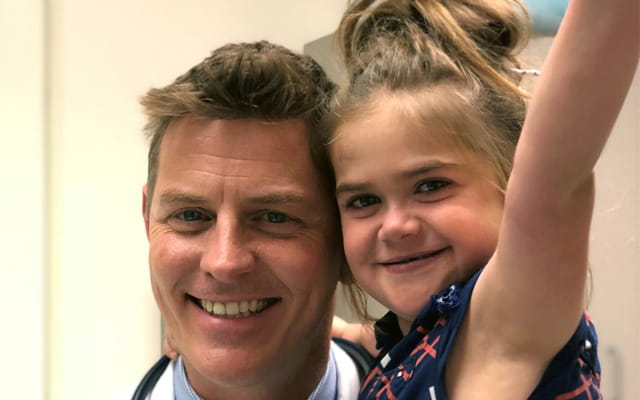Pediatric Cardiology Patient Thrives Thanks to UH Rainbow Babies & Children's

Born five weeks early, Mia Wilson was diagnosed with a rare heart condition called Ebstein Anomaly, which gave her a 10% survival rate. During her first year of life, Mia suffered several strokes and cardiac arrests requiring many surgeries and procedures. Thanks to her care and research teams led by Martin Bocks, MD, Director, Pediatric Catheterization Laboratory, UH Rainbow Babies & Children’s, Mia has accomplished many milestones and is a strong, happy girl today.
This year, Mia’s big milestone is her 12th birthday. In celebration, Mia and her family want to raise money to support Dr. Bocks’ research program as he works to develop medical devices for patients with congenital heart disease; one of which is a bioresorbable device to close holes in the heart without needing surgery.
Atrial septal defects, or ASDs, are one of the most common diagnosed congenital heart defects (CHDs) affecting patients. Because the current devices used in closing ASDs have some short-term and long-term limitations, Dr. Bocks expects that his novel device will provide distinct advantages over the devices currently available. His project recently won a $25,000 grant from the PediaVascular Pitch Competition at the Pediatric Interventional Cardiac Symposium. Funds from the grant will be used to develop the prototype that will then undergo extensive pre-FDA testing.
“What is most exciting about this device is its ability to completely disappear from the heart after the patient’s own heart cells have overgrown the device over the appropriate period of time,” said Dr. Bocks.
Dr. Bocks is also excited about the potential to 3D print these devices, which could then allow them to be manufactured in shapes and sizes specific to the patient’s heart dimensions. “This would be the first customizable cardiac device, which really is and should be the future of medical implants as opposed to the one-size-fits-all approach we have used for years for growing children,” shared Dr. Bocks. “We have much more work to be done to bring this device to market, but I am looking forward to the day that we can offer new devices to some of our highest-risk congenital heart disease patients, like Mia Wilson."


